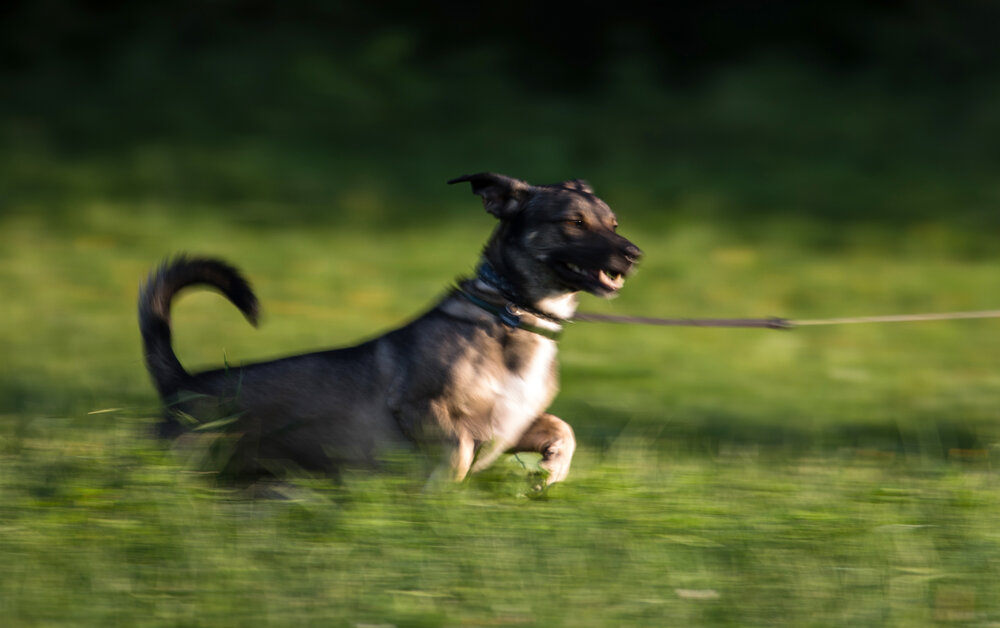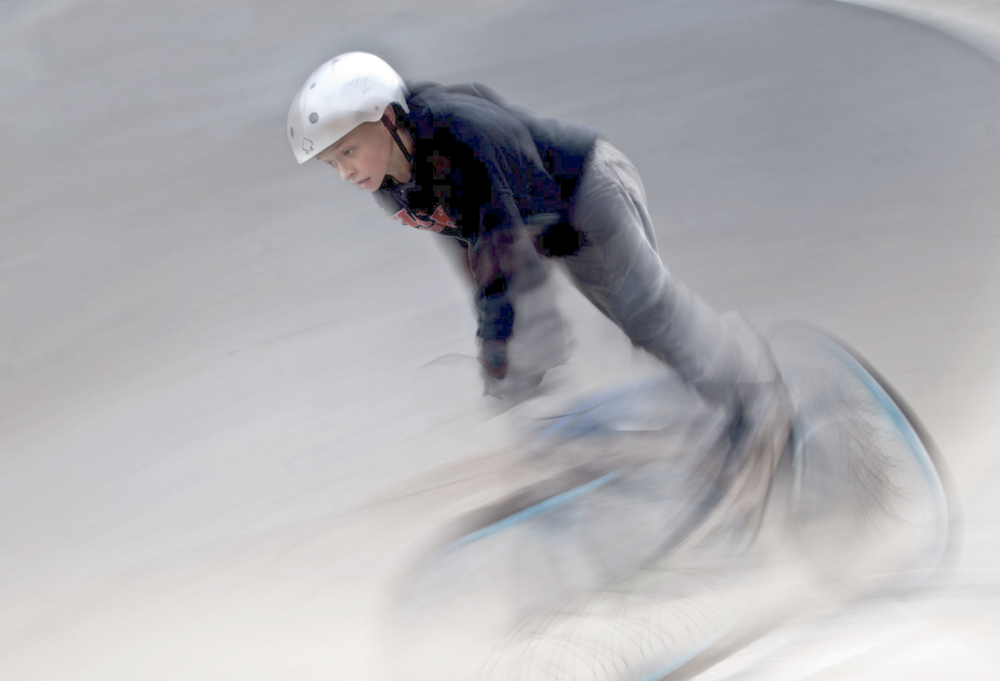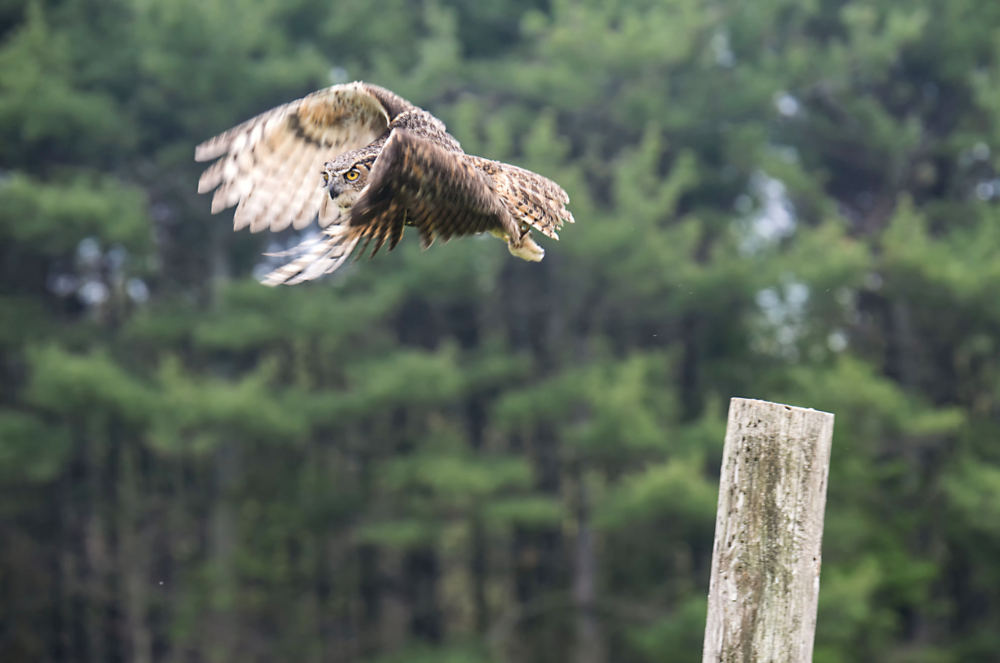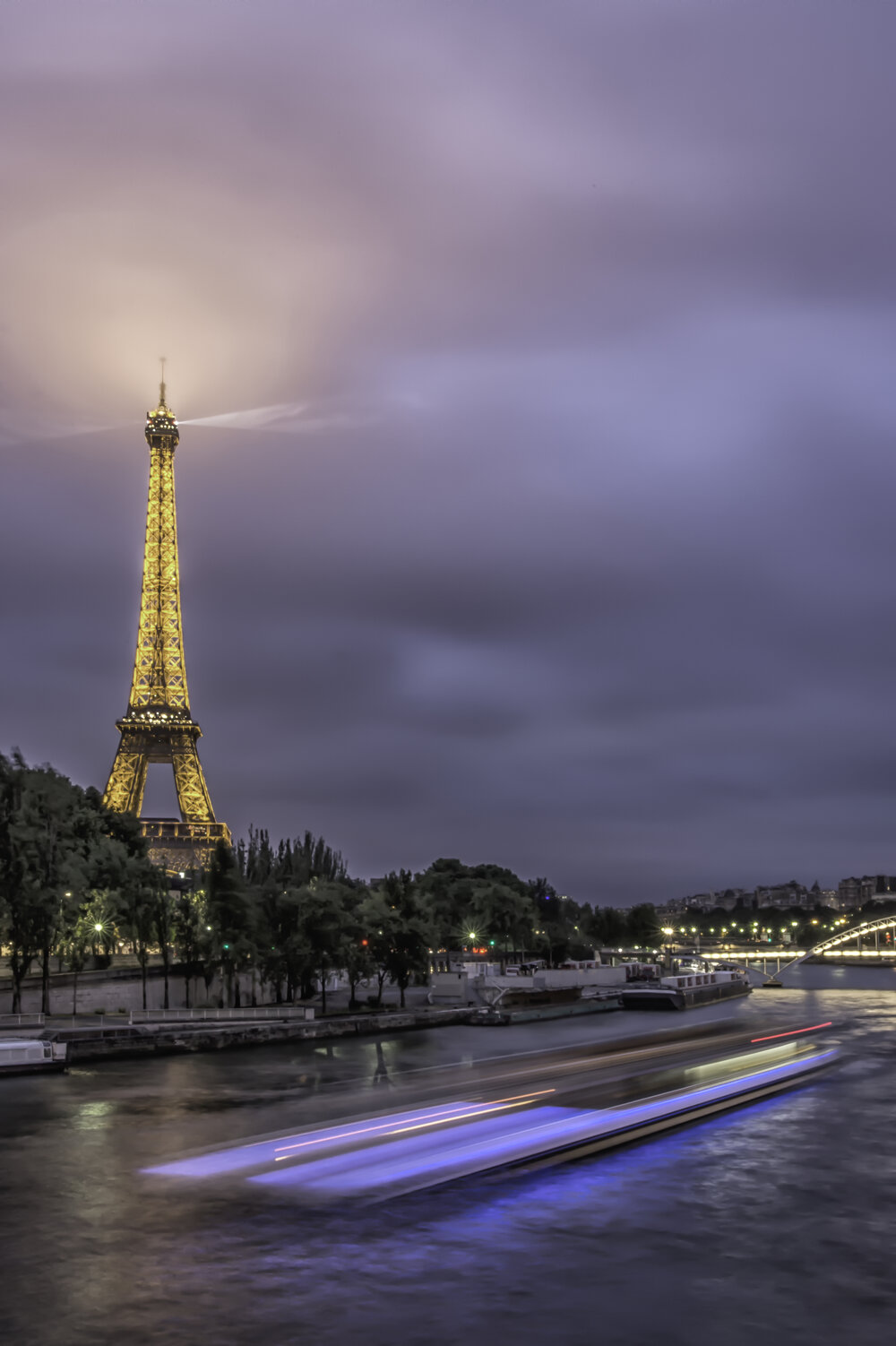
Panning in the back yard with a running dog – The dog was running back and forth. Simply put the focal point on the dog and shoot a burst of photos as the dog runs from side to side. Aperture F20, Shutter speed 1/60th of a second, Continual focus, continuous shooting mode, ISO100.
When you capture motion in an image you capture so much more. You capture energy and emotion. You can make your subject stand out against the background, or convey a sense of time passing.
The two methods for capturing motion we’ll be highlighting here both use slow shutter speed to demonstrate motion, with different end results. What counts as a ‘slow’ shutter speed? That depends on the subject and how it’s moving! Half the fun in trying these methods is in the experimentation.
Your assignment this week is to use one (or both!) of the below techniques to create a sense of motion in your images.

Panning with a kid on a bike – I let the kid go back and forth from my left to my right. I set the camera with an aperture of f16, Shutter speed of 1/160th of a second, ISO200. I set the camera to continual focus and set the shutter to take continual photos. I took 20-30 photos each pass keeping my focal point on the chest of the kid.
1 – Panning The goal here is to freeze part or all of your moving subject while allowing the background to blur. Pan the camera at the same speed the subject is moving while using a slow shutter speed.
-
Put your camera on Shutter Priority and set your shutter speed to around 1/30 of a second, then, after reviewing the results, adjust to a faster or slower speed to achieve the effect you want. You can use a neutral density filter if the light is too bright to achieve the shutter speed you want.
-
Use continuous focus and a high-speed continuous shooting mode to take multiple images as you track the subject.
-
Practice tracking the moving subject, and be sure to follow through as the subject passes you from side to side.

Launching Owl Long Exposure – The owl was on the perch. I placed my camera on a tripod and I composed and focused on the post. I set the camera to a single point focus as you would a typical landscape image. Without moving the camera I allowed the owl to fly out of the frame with a slower shutter speed, but shoot a high-speed burst of images as the owl took flight. I set my shutter speed at 1/200th of a second, Aperture of f16, ISO100. You can do this with any bird on a perch.
2 – Long Exposure In contrast to panning, this method will freeze your background while the subject is allowed to blur. You’ll need a tripod for this technique.
-
Select a background with some stationary objects and visual interest, but not so much that it’ll compete with your subject.
-
Put your camera on Shutter Priority and set your shutter speed to around 1/30 of a second, then adjust to a faster or slower speed as you review results.
-
Keep the camera still while your subject moves within the frame.

Long Exposure Paris photo – You can do this with any moving vehicle. I set the camera on a tripod and got the composition I wanted. I wanted for the boat to enter my composition and took a long exposure image. It took a few tries to figure out how many seconds it took the boat to cover the horizontal distance of my composition. Then set the camera to f8, 1/60th of a second, and got an ISO of 400 to get the proper exposure.
Stretch your creativity finding unique ways to create motion in and around your home, then post your images on Muench University. Our group of professional photographers will offer some feedback and support for your efforts!
Happy Shooting!
Kevin
